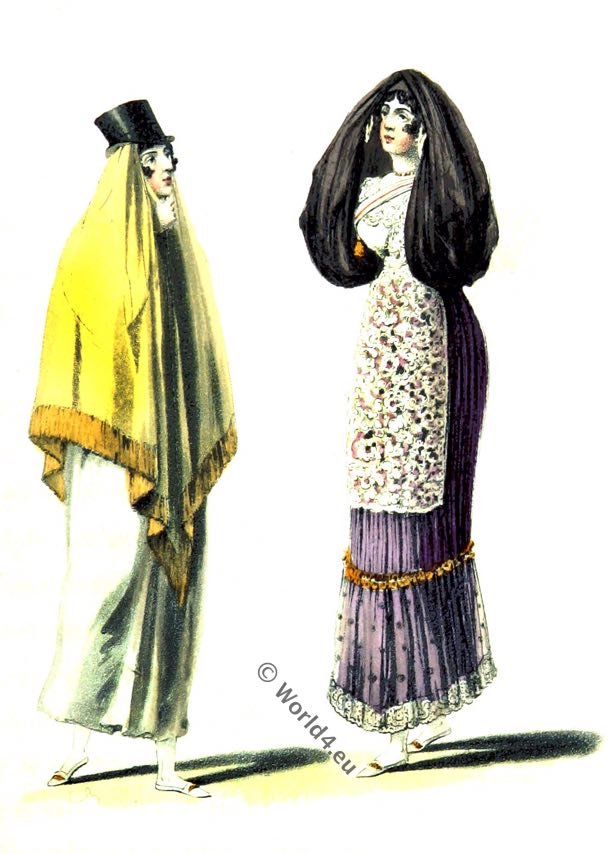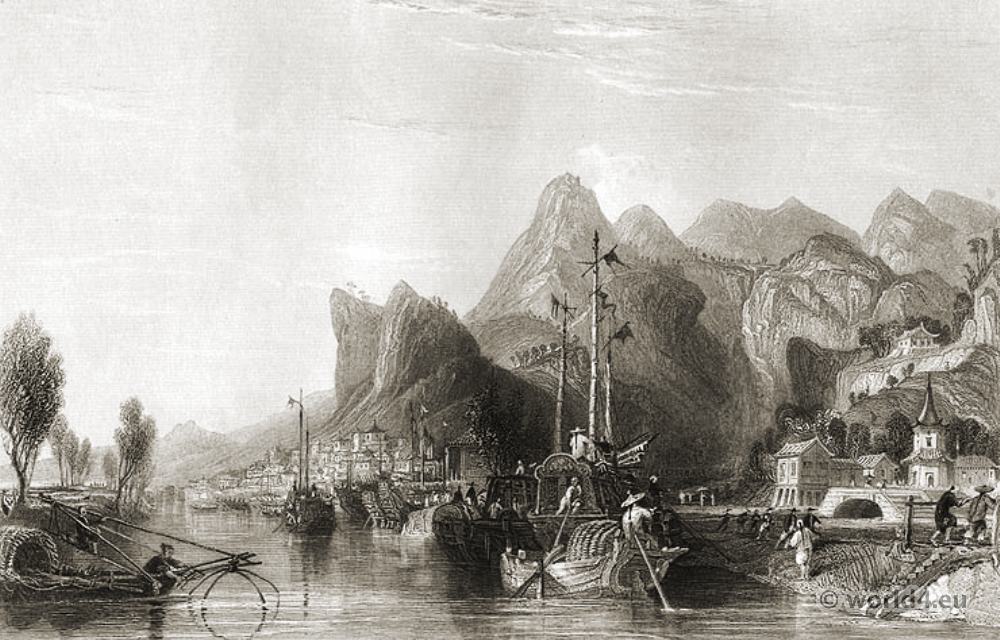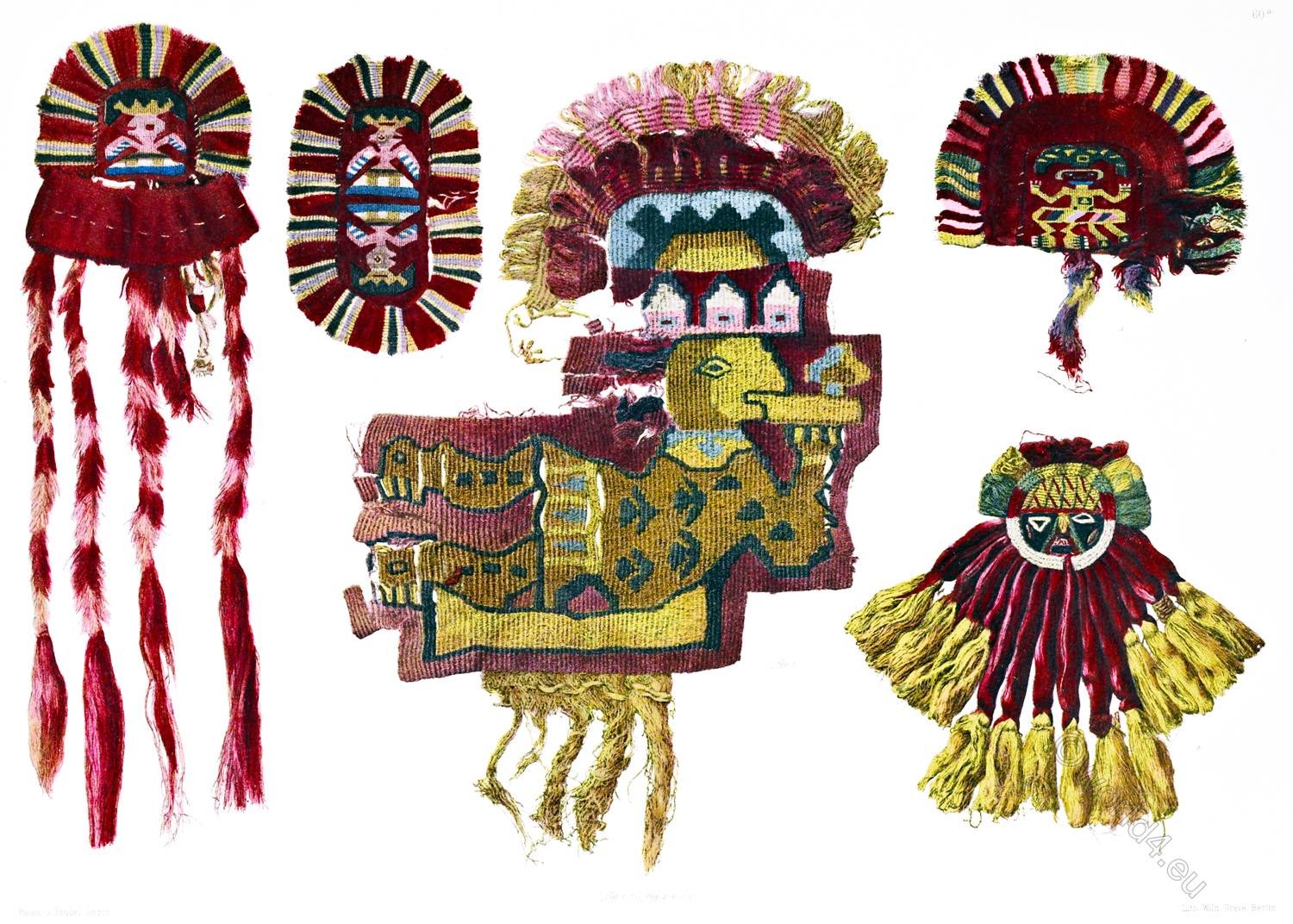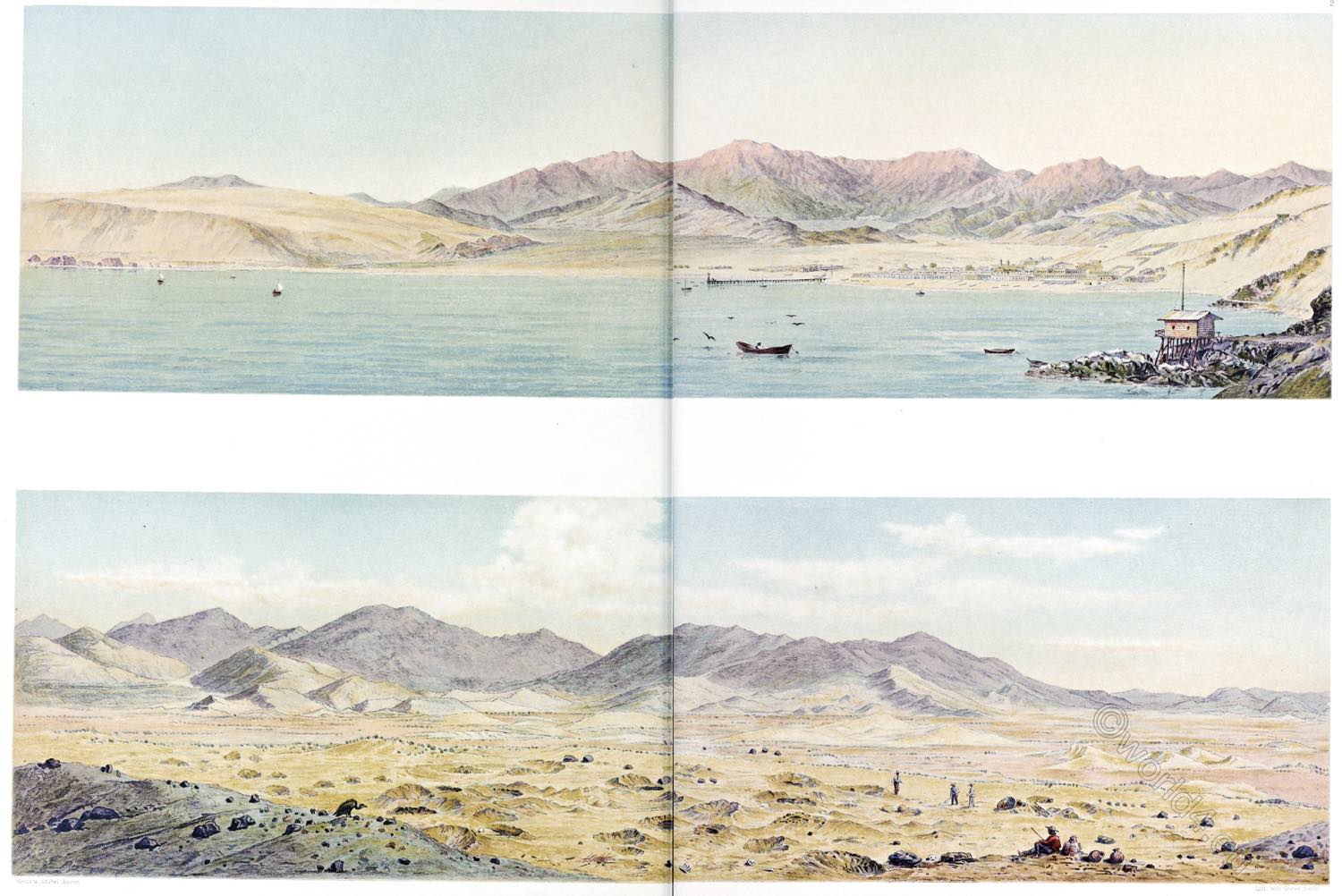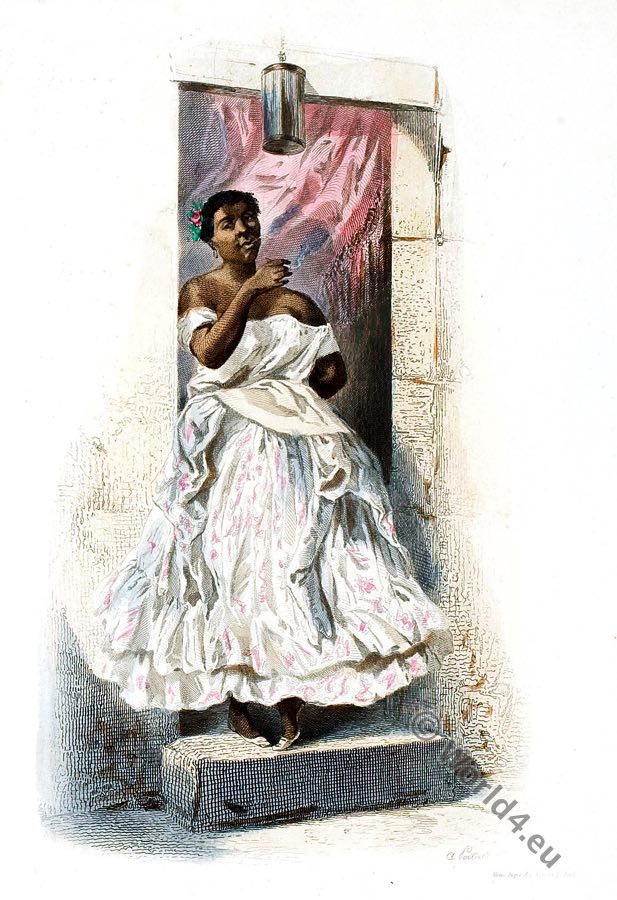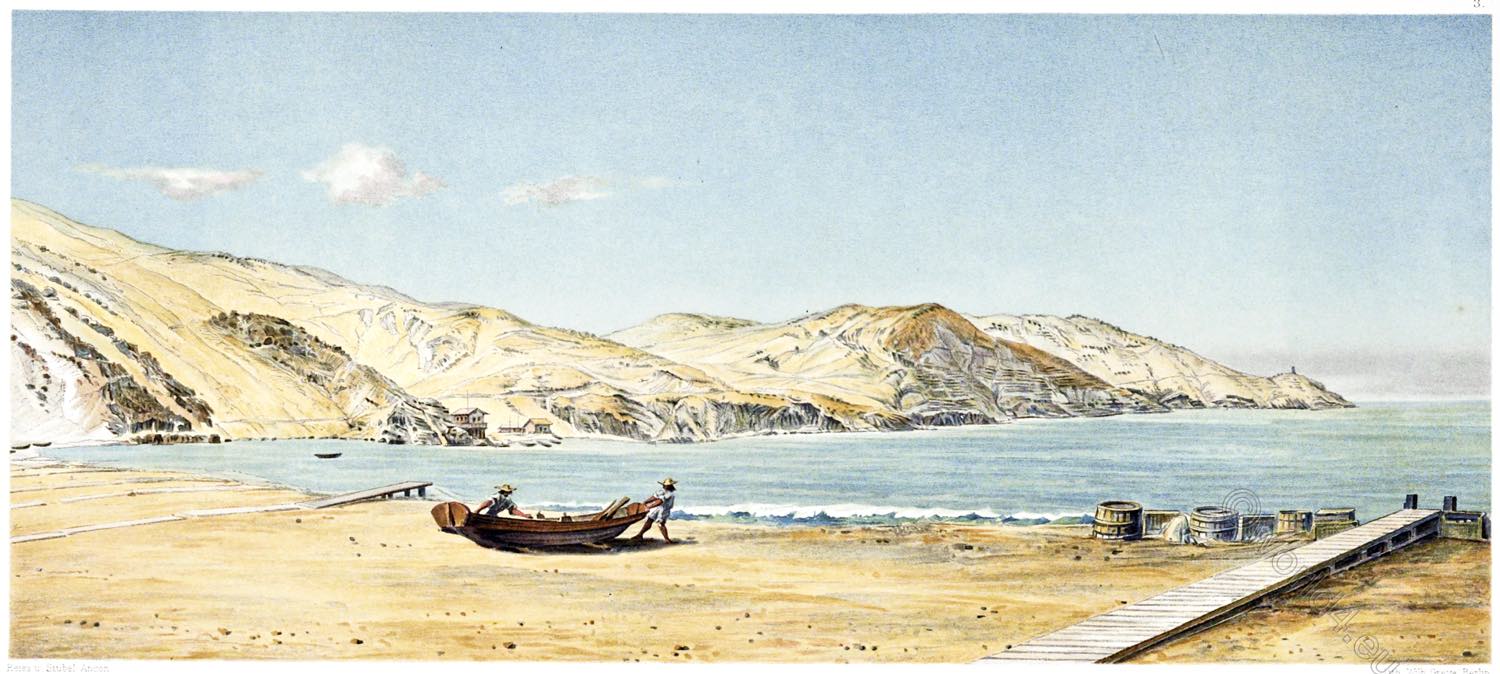
PLATE 3.
THE TERRACED HILLS SOUTH OF ANCON.
Southwards Ancon Bay is skirted by a bleak sand-covered ridge stretching seawards. The hills here figured form the extreme spurs of the chain indicated on the plan, and which ensure the safety of the harbour by sheltering it against the fierce southern gales.
The present illustration will serve not merely to explain the topographic relations, but still more to give prominence to a circumstance calculated to throw light on the importance of Ancon in pre-Spanish times. For the mountain slopes exhibit a terrace formation pointing at a former cultivation of this coast now arid and destitute of vegetation. It is hard to conjecture how the barren soil of this rainless district could have been rendered productive, especially as the supposition of artificial irrigation would invole serious difficulties.
The terraces have been very imperfectly preserved, the retaining walls being perceptible only at some distance oft, when they appear as parallel lines, whereas on a closer view they are scarcely to be distinguished from the other stone ruins.
At various points of the chain, as, for the instance, at the extreme projection, there are the remains of walls apparently suggestive of dwellings. Graves were also found in an inlet, which spreads out beyond the hills at the foot of the slopes turned from the spectator.
The whole range consists of crystalline formations, amongst which diorites would seem to prevail, often intersected by veins, which crop out especially where the cleft rocks have been worn by the surf.
In the foreground stretches the level beach, over which long lines of planks lead to the water for the greater convenience of bathers from the neighbouring houses during the hot season. Two fishermen are engaged in launching one of those canoes, which are here still much used in fishing. To render the some- what frail craft more seaworthy, the sides have been raised by a row of planks.
Viewed from the beach in front of the houses the coast here represented is closed in by the slopes figured to the right of the panorama (Plate 2, Fig. 1). The positions are more clearly indicated by several landmarks common to both pictures, especially by the fisherman’s hut built on piles, which in the pano- rama stands in the foreground, but which is here visible at a greater distance. Both pictures supplement each other, tho’ they do not afford a complete view of the bay until taken in connection with Plate 4.
Source: The necropolis of Ancon in Peru: a contribution to our knowledge of the culture and industries of the empire of the Incas being the results of excavations made on the spot by Wilhelm Reiss (1838-1908); Alphons Stübel (1835-1904), joint author; Wilhelm Greve, lithographer; Augustus Henry Keane (1833-1912), translator; Ludwig Wittmack (1839-1929); Rudolf Virchow (1821-1902); Alfred Nehring (1845-1904). Berlin: A. Asher & Co.; New York : Sole agent for America, Dodd, Mead & Company, 755 Broadway, 1880.
Continuing
I. The Necropolis and Neighbourhood.
Discover more from World4 Costume Culture History
Subscribe to get the latest posts sent to your email.

